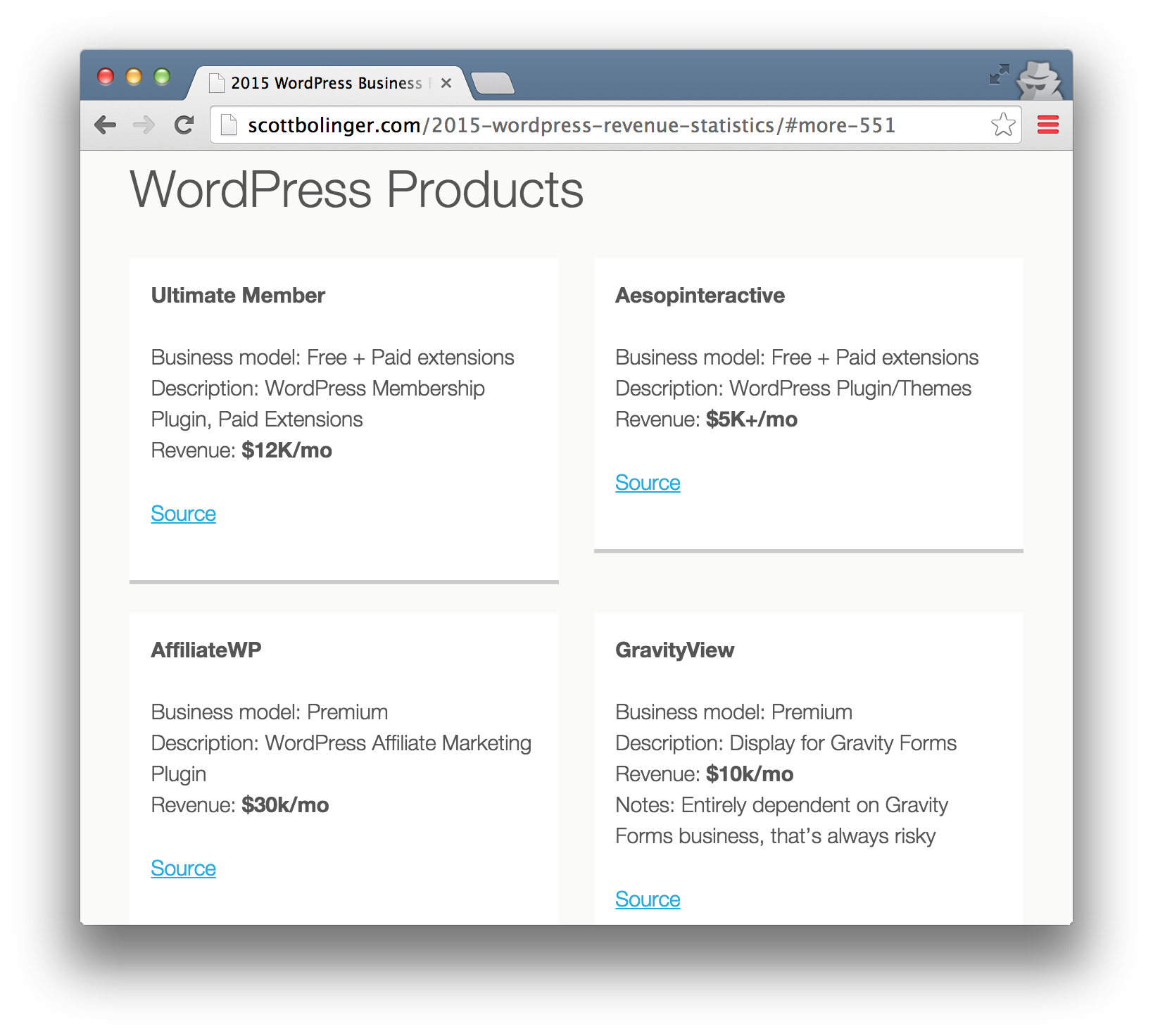In light of Automattic’s recent acquisition of WooCommerce (and all of WooThemes), estimated to be in the range of $30M, WordPress business owners have been infused with a fresh perspective of the value and potential in creating strong GPL-licensed products.
Automattic’s acquisition of Woo, colloquially referred to as the “WooMattic” deal, is the company’s first major purchase within the WordPress ecosystem since BuddyPress in 2007.
Perhaps most interesting: Woo is Automattic's first acquisition of a WP ecosystem product since BuddyPress (2007) http://t.co/AJ1CIPS9Nc
— Andrew Nacin (@nacin) May 20, 2015
The business model that brought WooCommerce to success is a free base product with a marketplace of commercial extensions. This revenue model currently drives the success of many of the top products in the WordPress ecosystem and is also proving to be effective for new businesses looking to quickly establish a user base.
This morning, WordPress developer Scott Bolinger published a compilation of 2015 WordPress business revenue statistics based on publicly available transparency reports and figures submitted by business owners. The resource includes each company’s business model, description, and monthly/yearly revenue.
Bolinger is planning to use this information in an upcoming presentation and will be keeping the resource up to date with new submissions and figures as they roll in.
Transparency reports from WordPress businesses, ranging from small to large, have been popping up frequently over the past year, as owners are surprisingly eager to share their progress and receive feedback from the community. These kinds of reports are not unique to the WordPress ecosystem, but they do seem to complement the spirit of adventure that is common among open source product developers.
Zack Katz, co-founder of GravityView, remarked on his motivation to share the company’s revenue publicly.
“I think sharing revenue humanizes GravityView: we’re not a nameless corporation where you put in money and somehow good products and customer service come out,” he said. “Our customers are part of an interaction: their purchase of a support license directly allows us to develop the product and help them do great things with their websites.”
Katz hopes that the resource will be inspirational for WordPress entrepreneurs who are just getting started.
The WordPress community is slowly realizing that businesses don’t have to be cutthroat black boxes to succeed. As more people and businesses share and open up, we’re redefining what it means to be a business in the WordPress ecosystem. I think this leads to lower barriers to entry for others to participate. By sharing GravityView’s numbers and some of the things I’ve learned, I hope others are better informed and inspired to join our community.
Nick Haskins, founder of Aesop Interactive, is currently in the midst of active experimentation with his products and business model and recently published a transparency report for his 15-month old company. He believes that these kinds of reports are important for demonstrating the types of products and pricing models that can be successful.
“I think for Aesopinteractive it’s showing that you can still abide by WordPress theme best practices, and be successful at selling WordPress themes as add-ons at $129 each with 3-5 options and no functionality,” Haskins said.
“Plus, I really hope it motivates other ‘small timers’ to share numbers as well, and be held accountable for our growth. It’s a lot like sharing your goals publicly, and letting people hold you accountable for it. Sink or swim, the lessons will be valuable either way.”

I can only hope this trend keeps growing. Money flow is one of the last vestiges of closed data. We’ve grown up with this strange notion that how much you earn is a very private thing, as if this number somehow represents your worth as a person. (p.s., we have public records of income and tax returns in Norway).
Another great example of revenue transparency can be seen in WordPress’ cool cousin, the Ghost project:
http://blog.ghost.org/april-2015-update/